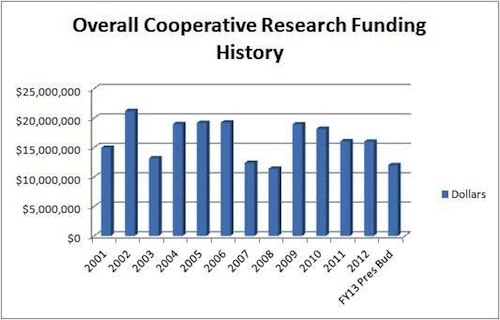On Saving Seafood Radio, Dr. Victor Restrepo discusses new research refuting claims from a commonly cited study alleging that the world's oceans have lost more than 90 percent of their large predatory fish.
WASHINGTON, D.C. (Saving Seafood) — October 31, 2013 — In this installment of Saving Seafood Radio, Dr. Victor Restrepo, Senior Vice President of Science at the International Seafood Sustainability Foundation (ISSF), discusses new research refuting claims from a commonly cited study alleging that the world's oceans have lost more than 90 percent of their large predatory fish, including tuna. The conclusive analysis is the work of Dr. Maria José Juan-Jordá, a researcher who recently completed her Ph.D. at the Universidade da Coruña in Galicia, Spain. Dr. Restrepo presided over the presentation and defense of Dr. Juan-Jordá's dissertation.
By collecting stock assessment results from 26 populations of tuna and tuna-like species from around the world, Dr. Juan-Jordá was able to conduct a thorough analysis of tuna’s global biomass. While some environmental groups have long embraced a statistic indicating that 90 percent of the global biomass of tuna has vanished, Dr. Juan-Jordá’s dissertation concludes that this decline is actually closer to 50 percent, a figure that tuna fisheries scientists, like Dr. Restrepo, have long considered to be a more accurate estimate.
Dr. Restrepo explains that the 90 percent estimate, which first appeared in a 2003 paper by marine scientists Ransom A. Myers and Boris Worm, of Dalhousie University in Nova Scotia, Canada, extrapolated its data from longline fisheries only. What Myers and Worm did not consider was that the type of fishing gear used in these fisheries only targets a certain segment of the population, particularly the larger fish. By failing to account for the complexity of tuna fisheries, Myers and Worm’s inaccurate hypothesis ultimately created a popular myth that affects the way these stocks are managed even today.
Some species of tuna, like Atlantic bluefin, are prized commodities within the fisheries marketplace. Weighing in at upwards of 500 pounds, a single bluefin can sell for thousands of dollars. Dr. Restrepo, who previously worked with the International Commission for the Conservation of Atlantic Tunas (ICATT) and served as head scientist for the NOAA delegation to ICATT, believes this new research will more accurately guide international management for highly sought bluefin and other economically important predatory species.
Listen to the full interview with Dr. Victor Restrepo
Read more about Dr. Restrepo’s work studying tuna here

 EDF has respected scientists on its staff, so one can’t help but wonder about the approval process on the publicity and fundraising side of the house that allowed this campaign to spread the inaccurate claim that 90 percent of the world’s large predatory fish, like tuna, have vanished.
EDF has respected scientists on its staff, so one can’t help but wonder about the approval process on the publicity and fundraising side of the house that allowed this campaign to spread the inaccurate claim that 90 percent of the world’s large predatory fish, like tuna, have vanished. 